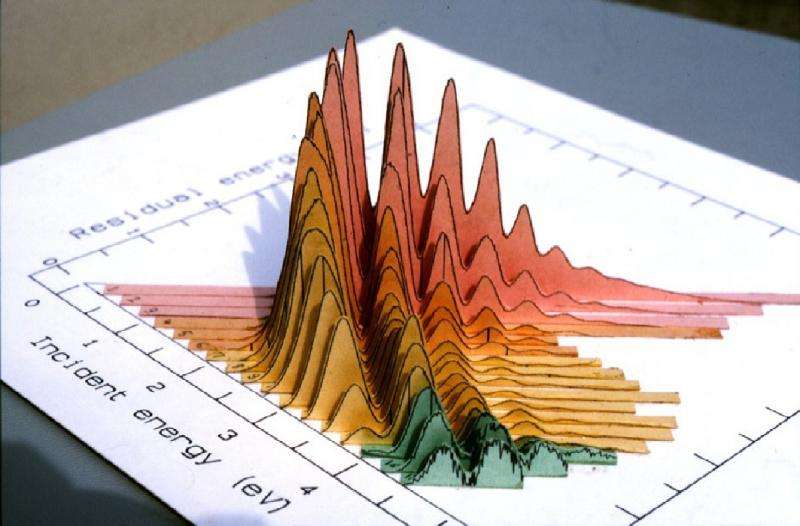Better material insights with gentle e-beams

There are several ways to change a molecule, chemically or physically. One way is to heat it; another is to bombard it with light particles, or photons. A lesser known method relies on electron collision, or e-beam technology, which is becoming increasingly popular in industry. In a review outlining new research avenues based on electron scattering, Michael Allan from the University of Fribourg, Switzerland and colleagues explain the subtle intricacies of the extremely brief electron-molecule encounter, in particular with gentle, i.e., very low energy electrons. In this paper, which was recently published in EPJ D, the authors describe how the use of very low energy electrons and a number of other performance criteria, make the approach with the so-called Fribourg instrument a more appealing candidate than previously available tools used to study electron collisions.
In this study, Allan and colleagues review three new directions where the Fribourg instrument can be applied. First, to study electron collisions with liquids, instead of merely focusing on collisions with isolated molecules in gas phase, as was previously done. Second, the instrument is suitable for recording the 2-dimensional spectra of molecules to gain insights into how the atoms move within the molecule during chemical reactions. Third, it can also be used to quantitatively measure the electronic excitation of the bio-relevant molecule pyrimidine. This measurement made it possible to evaluate an extremely elaborate quantum theoretical method, called the R-matrix theory, with a stunningly good agreement between experimental findings and calculations.
One of the potential applications of this approach is in the quest to find a replacement for a molecule called sulfur hexafluoride (SF6), a greenhouse gas stored in high voltage electricity distributing devices, such as switches and transformers. SF6 works very well, but too often escapes to the atmosphere due to improper disposal of the switches and transformers. Electron collision could help identify a more suitable gas.
More information: Michael Allan et al. Recent research directions in Fribourg: nuclear dynamics in resonances revealed by 2-dimensional EEL spectra, electron collisions with ionic liquids and electronic excitation of pyrimidine, The European Physical Journal D (2016). DOI: 10.1140/epjd/e2016-70153-2
Journal information: European Physical Journal D
Provided by Inderscience Publishers





















